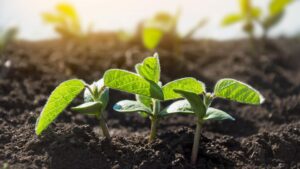The “classic” movie from 2000 Dude, Where’s My Car? follows Ashton Kutcher’s attempts to locate his vehicle after an adventurous night on the town. It’s definitely not a good movie, but the frantic search for something as important as your car kept coming up in mind as I thought about the seed industry in 2021. Like Ashton Kutcher, seed companies are in a race against the clock to find something incredibly important to them: their margin.
A major rebound in commodity demand and forecasts for a hot and dry U.S. summer pushed prices higher. Drought in Brazil and multiple rounds of frost underpinned a market that looked to offer improved returns for farmers and seed companies.
But, the supply chain was watching. Input costs chased prices for a while. Eventually, they pushed close to breakeven and put farmers in a bind. Do they price now at a margin like last year or hold out for a better price? Seed companies ended up in the same position. Higher commodity prices pushed seed costs higher as accessing land became more expensive. Other supply chain partners sought to bolster their bottom lines and pushed through price increases as well. In the end, seed companies were left wondering, “Dude, where’s my margin?”
Such has been the life at the razor’s edge of the supply chain. To most, the rising tides are not lifting all boats.
The seed and grain supply chain has always been at conflict with itself. Every intermediary seeks to carve as much margin out as possible. Essentially, the goal has seemed to be to extract as much as legally or politically possible. Fines and penalties are only incurred when the fervor is loud enough for Washington to hear, but even that rarely changes the status quo.
I believe the moment for change is here. New technologies, across both seed and grain, are carving out new segments with new opportunities. Even past closed loop system ideas are getting new life as innovations in germplasm and grain composition now come with competitive-yielding germplasm. The trade-off between yield and quality is closing in on zero. The opportunity for true margin expansion is here.
Choose your partners carefully to prepare for this next phase. Build relationships with those that give you flexibility, create optionality and share in both the risk and reward. Reduce your dependency on intermediaries and make deeper connections through the supply chain. These steps will put you in a position to demonstrate your value to the next generation of seed and grain innovators. The bulk commodity business will always be there but will only ever allow limited upside while transferring risk down the chain.
By positioning your business as a key partner for a closed-loop system, you’ll have a much better chance locating your missing margin.









